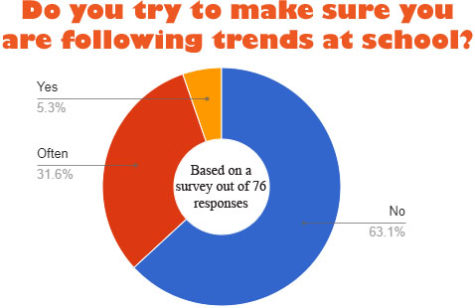Birth control does more than prevent pregnancy
February 27, 2020
Both male and female contraception comes in multiple forms such as birth control implants, vaginal rings, patches, pills, shots, IUDs, condoms, diaphragms, cervical caps, spermicide, vasectomy, and sterilizations. Some forms are also used for multiple reasons besides pregnancy prevention, such as period regulation, and hormone control.
According to Guttmarker Institute, after pregnancy prevention the most common use for birth control is to reduce cramps and menstrual pain and for menstrual regulation along with headache prevention and acne treatment.
“I would take birth control because in the past whenever I got my period, I would get terrible cramps that would cause me to be in so much pain I’d miss school. The first step I took was to start birth control and it really has helped a lot,” Anne Serdar, senior, said.
Society seems to be moving in the direction of accepting birth control for other reasons than preventing pregnancies. Christina Florence, health teacher, explains how in her class she is trying to encourage students to do more research on their own and is guiding them to find out the truth rather when simply telling them the black and white regarding birth control.
“Birth control is not just used as contraceptive and I feel like there’s stigma that comes with it,” Serdar, said. “But now as we are able to talk about it more freely as a society, we are able to understand that it is also used to help hormonal imbalance in the female body.”
Some students have not let any stigma dictate thier choices.
“I’ve never felt ashamed of it. People think whatever they want about me. It’s not their business that I’m taking medication, and it doesn’t matter what I’m using the pill for: my period, sex, acne, or otherwise,” Payton Middleton, senior, said.
The idea of birth control has not always been widely accepted by the population such as within the Catholic Church. According to FindLaw.com there was so much pressure from the Catholic Church in the early 1900’s that Congress did not pass a bill that “sought to reverse the federal position prohibiting birth control.”
Even more recently the idea of contraception has been considered a hushed topic that is either not talked about or hardly discussed, even in health classes.
“We [her high school class] did not learn about contraception. Most schools were abstinence only. There’s controversy on what people, community, society should be teaching. Though we have shifted, if people decide to be sexually active no matter what their age is, it is now ‘how do we protect ourselves,” Florence said.
According to PAI, which is a global organization trying to advance the affordability and the quality of health care for women, birth control helps give women more control of their life by allowing them to choose if or when they have children and as a result allowing them to focus on their education and career.
“In choosing a method of contraception, dual protection from simultaneous risk for HIV and other STDs also should be considered,” Centers for Disease Control and Prevention, said. “Although hormonal contraceptives and IUDs are highly effective at preventing pregnancy, they do not protect against STDs, including HIV.”
While women are the most frequent users of birth control, options are becoming more available for men. Currently according to UT Southwestern Medical Center, the only contraception options currently for men are abstinence, condoms, the withdrawal method, and a vasectomy. However, male birth control has passed its first round of testing. The pill is supposed to “decrease the production of testosterone and sperm without causing symptoms of low-testosterone.”
“Women may no longer have to carry full responsibility for reversible, highly effective forms of contraception. The fact that this pill is being studied gives options to patients with a variety of circumstances, and the mindset shift is encouraging,” Tolulope Bakare, urologist for UT Southwestern Medical Center, said in an article.







